Editor of this issue: Anatole C. Matulis
Copyright © 1968 LITUANUS Foundation, Inc.

|
LITUANUS
LITHUANIAN
QUARTERLY JOURNAL OF ARTS AND SCIENCES
Volume 14, No.3 -
Fall 1968
Editor of this issue: Anatole C. Matulis ISSN 0024-5089
Copyright © 1968 LITUANUS Foundation, Inc. |

|
FOLK SCULPTOR VINCAS SVIRSKIS
Irena Kostkevičūtė
Vincas Svirskis (1835-1916) is an outstanding Lithuanian folk sculptor. The main features of his life as well as his biography are familiar to us only from hearsay. A self-taught professional, lonesome, single, without property and permanent home, he seemed somewhat strange in his surroundings. All his life V. Svirskis wandered from village to village, making stops where people wanted to have their homesteads and wayside decorated with the ingenious crosses of his wor
Wood-carving and sculpture enjoyed popularity and universal following at that time in Lithuania. They had permeated the people's everyday life and were flourishing with their manifold and plentiful variety of form.
Vincas Svirskis was an inseparable member of the numerous family of cross-carvers. His creation expressed the outlook and form conception typical to folk art. Yet, although adherent to the tradition of his time, Svirskis stands out as a personality of brilliance and originality. His work shows a wealth of plasticity, scope and often finds expression in whole sculptural ensembles. V. Svirskis was a full master of space and voluminousness and far exceeded his contemporary cross-carvers in the establishment of a link between sculpture and architecture. His carvings are pieces of monumental sculpture, striking for their composed inner force.
During his lifetime V. Svirskis has carved over two hundred crosses, not all of which have, unfortunately, survived. They are original both in execution and artistic form. The sculpture is usually cut in the body of the cross, while the statuettes of other folk masters are fastened to the crosses or "installed" in votive chapel-posts. The figures of the saints cut out by V. Svirskis reach up to metre height; some are life size. The lay-out is most varied. Some of the statuettes are fitted in on one side of the cross. Yet the majority extend over two, three and even all the sides.
The sculptor made his shrines from four to five metres high, of stout oak-tree trunks, as a rule. Having scooped out a rich bas-and high-relief ensemble on the thick end of the trunk, he dug the upper part of it into the ground. Impressive and strong, with a great number of characters polychromized by the author himself, the crosses looked magnificent against the background of the changing mood of all the four seasons of the year.
V. Svirskis' creation is felt to have some features common with the baroque. However, the artist's conception of the baroque is that of a folk artist. He mastered only particular baroque elements of decorative character, namely, the curving, supple line and the painting-like nature of sculptural form. Those features did not, comprehensively, affect the tectonics of folk art, its impression remaining that of symmetry and well-disciplined balance.
In his late years, the sculptor was known to be a person of unusual spiritual and physical endurance. By that time he had achieved great laconicism of form as well as noble simplicity.
The author of wayside and field shrines, Vincas Svirskis stands out as a brilliant and original figure in the history of Lithuania's fine arts.
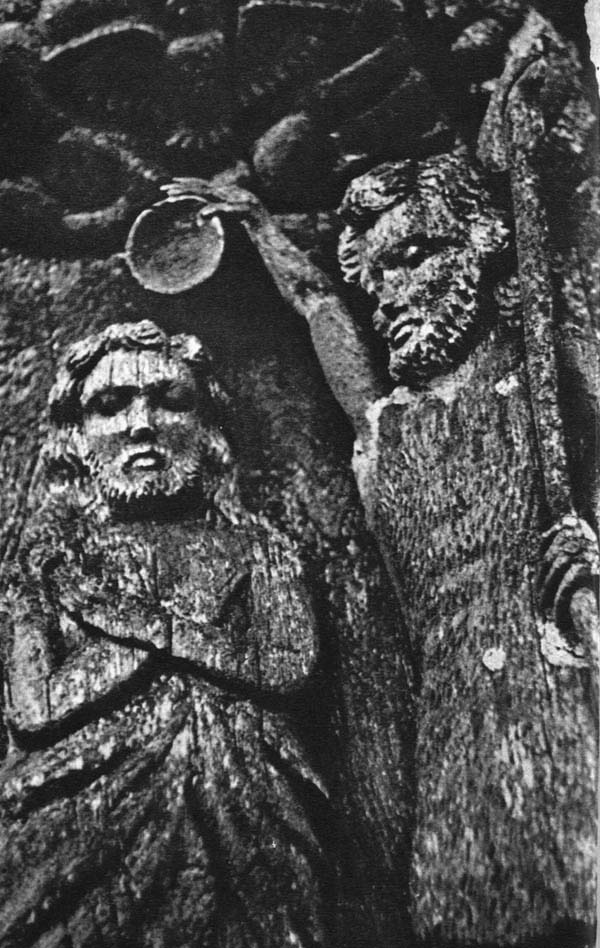
"John the Baptist",
Šmotiškiai village (1904?);
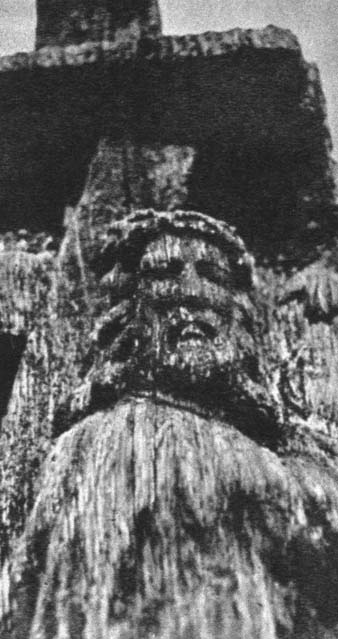
Detail from the cross of Bagotiškiai village (1907)
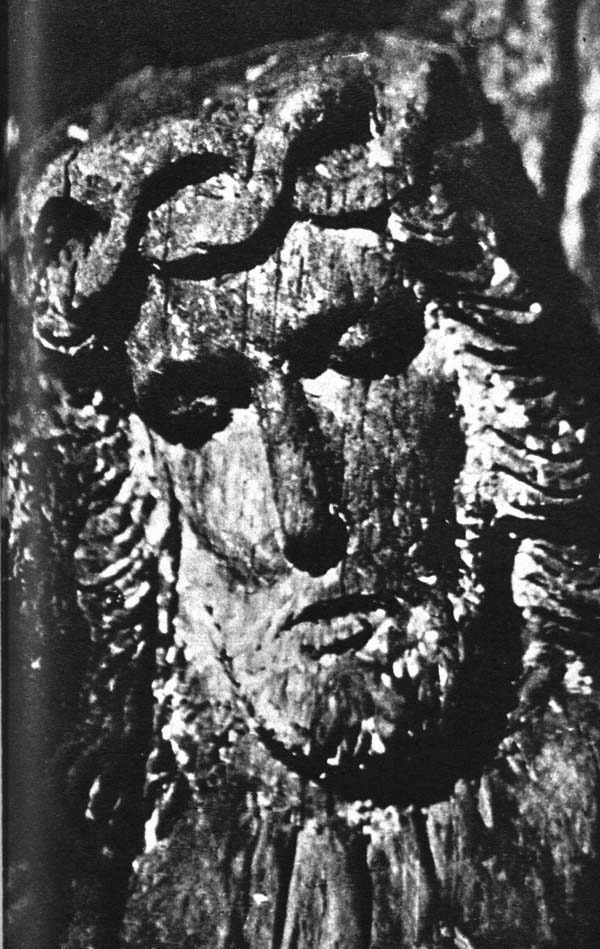
"To Golgotha", detail from the cross of Jogniškiai (1890?)
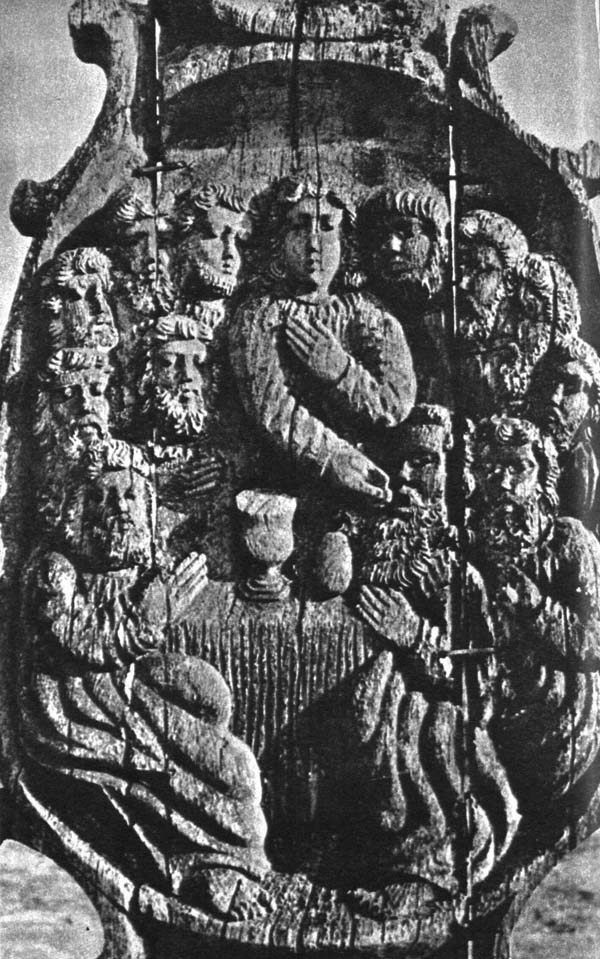
"Last supper", cross of Bakainiai (1891)
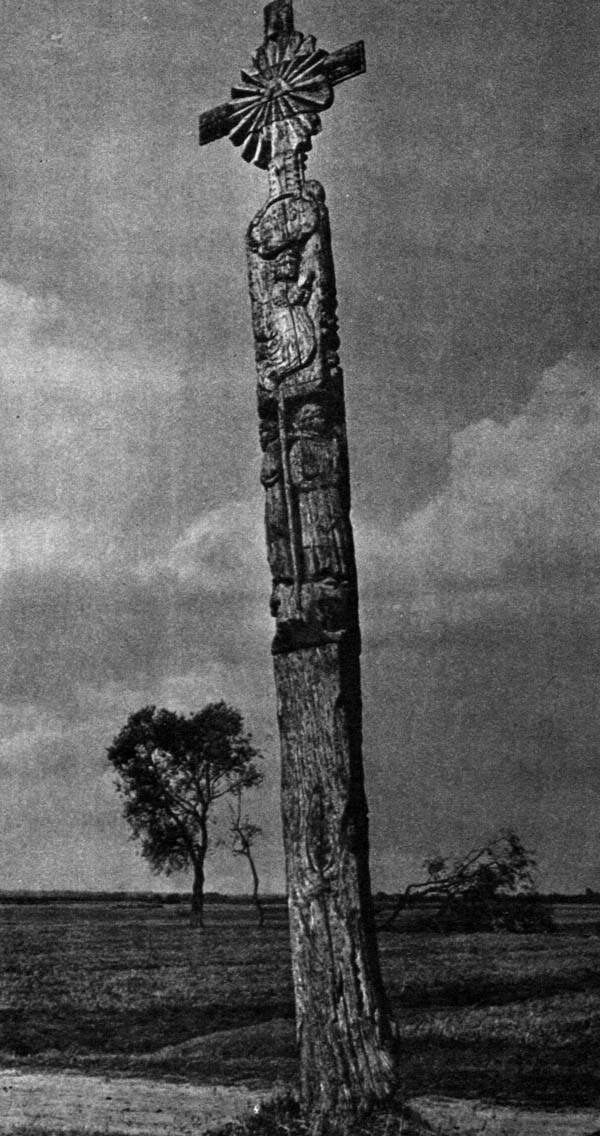
Youth cross of Pakruostė (1891)
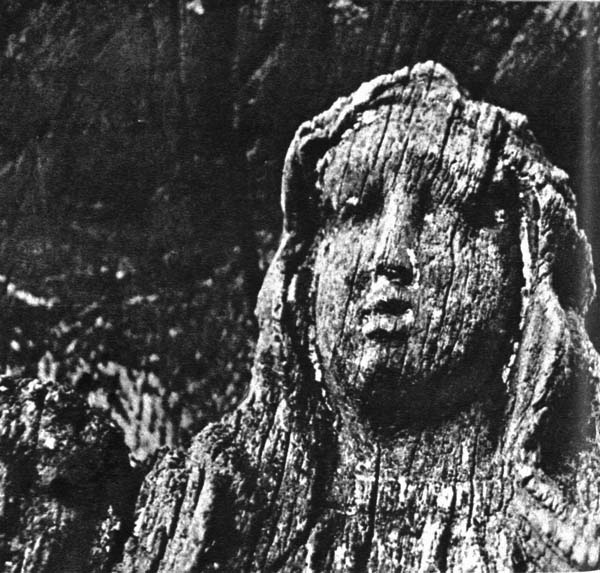
"St. Anne with Mary", detail from the cross of Pakruostė (1891).